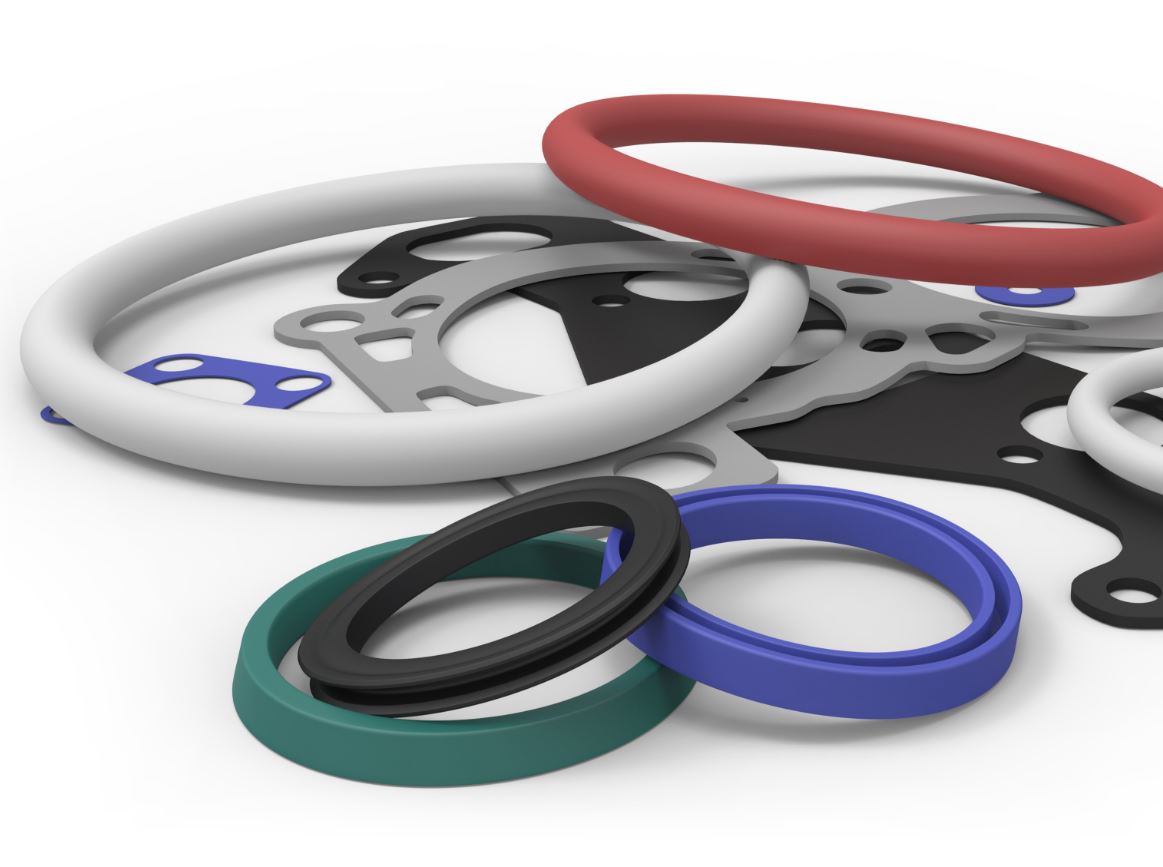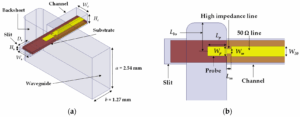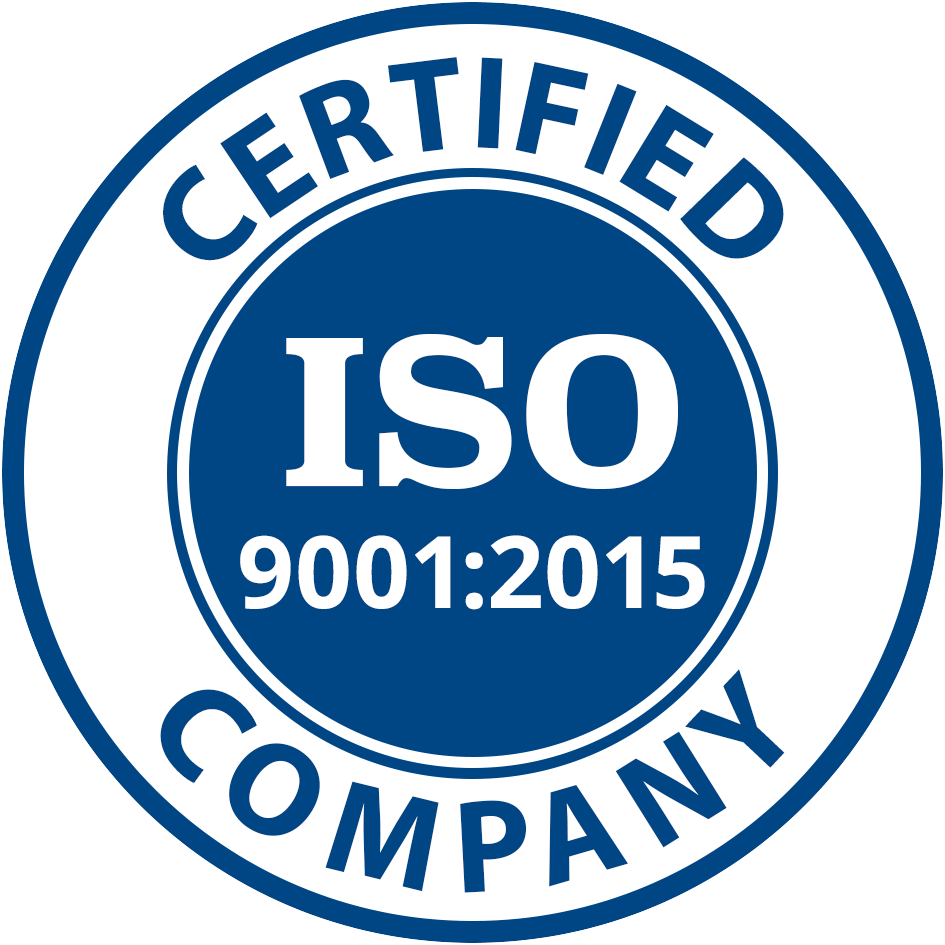Table of Contents
Design
The O-ring is of a toroidal shape, having a circular cross-section. This uniformity allows it to serve in both radial and axial sealing applications. For example, a standard O-ring manufactured from Nitrile rubber-NBR would typically be 70 Shore A hardness and would typically withstand pressures up to 1500 PSI in static applications. An O-ring can be as small as 1mm to 1000mm in diameter for small and large engines, machinery, etc. The cost of a generic NBR O-ring ranges between approximately $0.50 and $2, depending on size and type, thereby making it fairly economical for most applications.
A U-seal has a U-shaped cross-section that allows for dynamic sealing. This is designed to be tighter under pressure since the U-shape bends and deforms to create a tighter seal with exposure to high pressure. A Polyurethane U-seal typically has a hardness of 90 Shore A, which makes them stronger under dynamic conditions, especially in hydraulic and pneumatic applications. Under dynamic applications, a standard Polyurethane U-seal can take up to 5000 PSI pressure, which makes them fit for systems having huge motion-amplitude, such as hydraulic cylinders. Diameters for U-seals range from 10mm to 500mm and are costlier, averaging between $3 and $5 per seal.
Another critical design difference between O-rings and U-seals concerns high-temperature applications. O-rings made from Viton-a very high-performance rubber-can support temperatures up to 400°F. These seals, particularly in the motor industries or aeronautic fields, can start at $2 to $6 depending on their size and material qualities. In dynamic applications, O-rings show wear at high speeds, leading to leakage and frequent replacement. On the contrary, U-seals can handle the constant motion and pressure cycling without loss of integrity. A PTFE Teflon U-seal can be used at up to 500°F 260°C and in applications that require both high temperature and motion, such as chemical processing plants. PTFE U-seals are from $10 to $20.
For sealing efficiency, the U-seal exceeds the O-ring in dynamic systems. In one such test of hydraulic piston rod, U-seal maintained sealing integrity to 12,000 cycles, where the O-ring seals started to leak at 7,500 cycles under the same operating conditions. Sealing pressure achieved by a U-seal in dynamic conditions was recorded to 4500 PSI, while an O-ring seals maintained only up to 3000 PSI seal in similar dynamic applications.

Function
The primary function of an O-ring is to seal either a static or dynamic relationship between two surfaces in a way such that gases or liquids may not leak through. In static applications, in the sealing of a pipe flange, an O-ring will resist pressures to a value as high as 1500 PSI without showing any signs of deformation. In dynamic applications, like automotive fuel injectors, the estimated running life of an O-ring is in the range of 6,000 to 10,000 hours. The performance of the material would vary from the material used, in this case, from Viton to Nitrile. As an example only, Nitrile O-rings will be excellent in general-purpose service up to temperatures of 250°F (121°C), while Viton O-rings can operate with working temperatures as high as 400°F (204°C). Due to price, O-rings are rather cheap, normally one could buy them on some average price of $0.50 to $2 per piece.
A U-seal is designed in such a way that under pressure, it flexes and expands into an even more effective seal as pressures go up. Hydraulically speaking, a U-seal utilized in hydraulic cylinders can handle pressure ratings up to 5000 PSI-a range far higher than that of O-rings. In a standard U-seal manufactured in Polyurethane, the friction coefficient is around 0.2, while for an ordinary O-ring it is about 0.4, thus allowing much smoother operation in dynamic systems. This reduction in friction translates into longer service life and less wear on the components. For instance, a U-seal will function in a hydraulic system for up to 15,000 cycles before wear begins to show, whereas O-rings do approximately 10,000 cycles under the same conditions.
When the velocity in pneumatic systems reaches 5 meters per second, after running for 200 continuous hours, the failure of an O-ring due to accumulated heat and friction will occur. But U-seals are designed in such a manner that heat can be dissipated more efficiently to overcome thermal shock. In this respect, U-seals may run 400 hours under the same conditions. A U-seal costs in the range of $3 to $7 depending on material and size, while the long-term savings by reduced maintenance and downtime far outweigh the initial price difference against O-rings.
Material efficiency is also better in U-seals while performing the sealing function, especially in an environment with frequent pressure fluctuations. In a hydraulic press that has a power rating of 3000 PSI, the U-seals are able to keep a tight seal while the pressure is changed rapidly between 1000 PSI to 3000 PSI. An O-ring couldn’t function under such variable pressure and may start leaking after repeated pressure cycles. Studies have proved that U-seals retain up to 98% sealing efficiency even after 10,000 pressure cycles. Correspondingly, O-rings retain only 85% sealing efficiency after 10,000 pressure cycles.

Application
O-ring seals are rather versatile and not too expensive, applications in automotive engines will seal fuel injectors and oil pumps among others, and temperatures can range from -40°F to 250°F with standard Nitrile rubber (NBR). For very high-temperature applications, even at 400°F, high-performance turbochargers and exhaust systems require Viton O-rings. A common price for a Nitrile O-ring would be in the region of $1 per unit. Because of their higher-quality material, Viton O-rings cost in the range of $3 to $6.
In hydraulic systems, O-rings are used in both static seals, such as valve bodies and pipe fittings. Hydraulic systems usually work within a pressure range of 1000 to 3000 PSI, and the O-ring, with its simple circular cross-section, is found to be very effective at sealing stationary components. The failure rate of O-rings in static hydraulic applications is roughly 2% over 10,000 operational hours, if the proper material is specified and installed properly. A typical O-ring kit containing a mix of sizes for hydraulic repairs might cost between $20 and $50 and can be considered reasonably inexpensive for the service lifetime of most industrial machinery.
U-seals are very good in dynamic applications because different members are normally in motion. Cylinders is in construction equipment, like excavators, where the U-seal is able to withstand high pressure and frequent pistons’ movements. These cylinders can be run at pressures up to 5000 PSI, and the U-seal’s unique U-shaped cross-section provides better sealing performance by allowing the seal to flex and adjust as pressure fluctuates. In a test carried out in hydraulic systems, after 15,000 cycles, U-seals maintained 90% sealing efficiency, while the O-ring seals had 70% under the same conditions. In such applications, the average life span of a U-seal is about 12,000 operational hours, while O-rings only show 8,000 hours of life in similar environments. The cost for U-seals varies from $4 to $10 for the size and material variation which makes the seals more durable for high-pressure and high-movement applications.
U-seals also find wide applications in pneumatic systems due to their reliability in maintaining the seal during high-speed reciprocating motion. Pneumatic actuators can run up to 10 meters per second, and air leakage is eliminated by the U-seals to ensure efficiency in operation. The friction coefficient of a typical U-seal is around 0.2, while that of O-rings is as high as 0.4, so U-seals can allow for smoother operation. This difference in friction makes all the difference in the efficiency of the system at very high speeds since the O-ring could burn out faster because of the accumulated heat. U-seals applied on pneumatic applications have an average service life of 30,000 cycles, while O-rings, under the same conditions, are usually replaced after only 20,000 cycles.
U-seals find very common application in industrial manufacture in robotic arms and precision machinery that often works under high pressure with continuous movement. These applications see use as high as up to 6000 PSI, which a U-seal can take while sustaining the integrity of the seal over a long duration in operation. At one robotics factory operating 16 hours per day around the clock, it was found that U-seals were showing no significant wear at 18 months compared with 12 months with O-rings. The cost of downtime in manufacturing is often reckoned in terms of lost production, and for large facilities, each hour of downtime can cost upwards of $10,000, which can be estimated between $5 and $15 per seal, depending on the size and material used.







